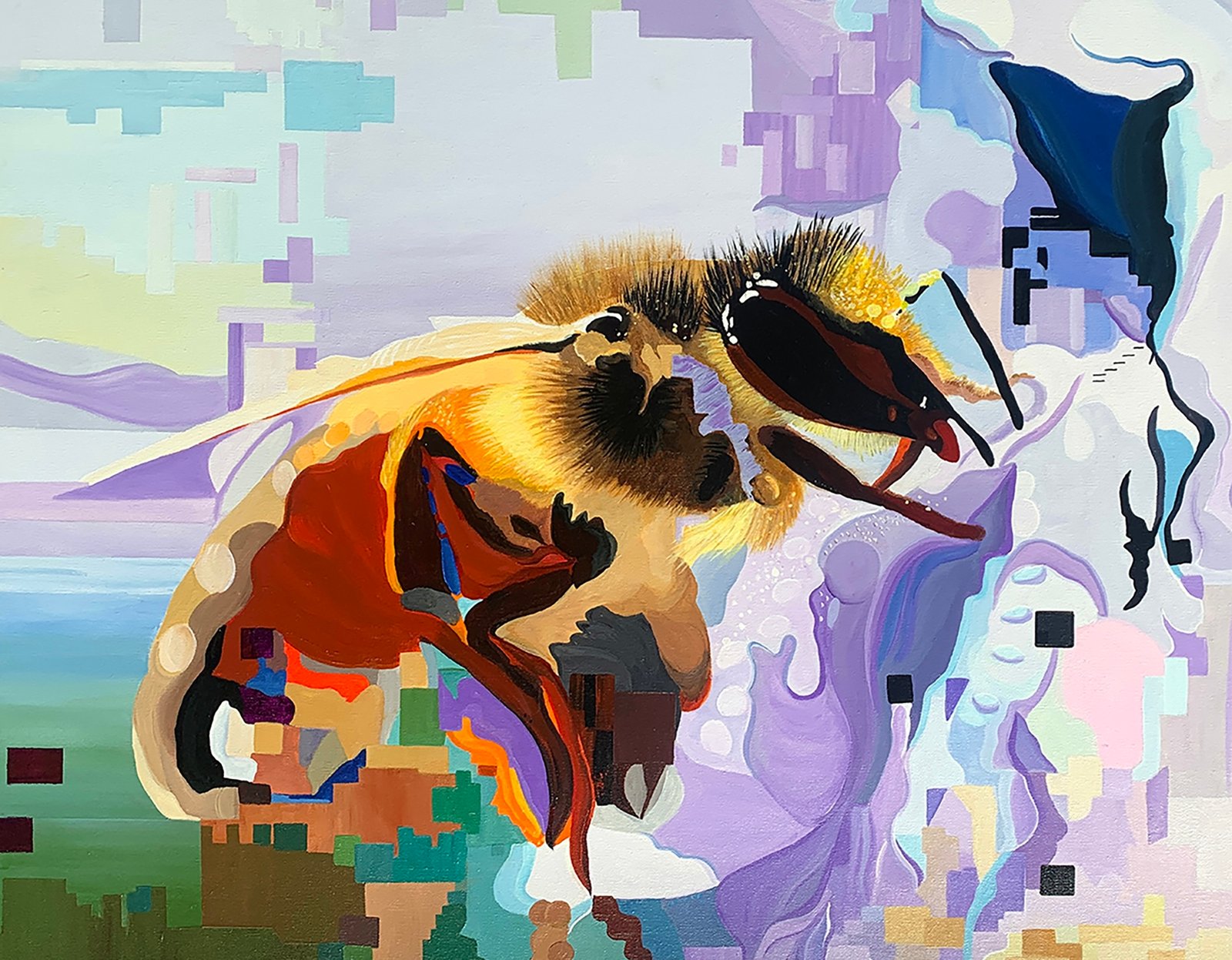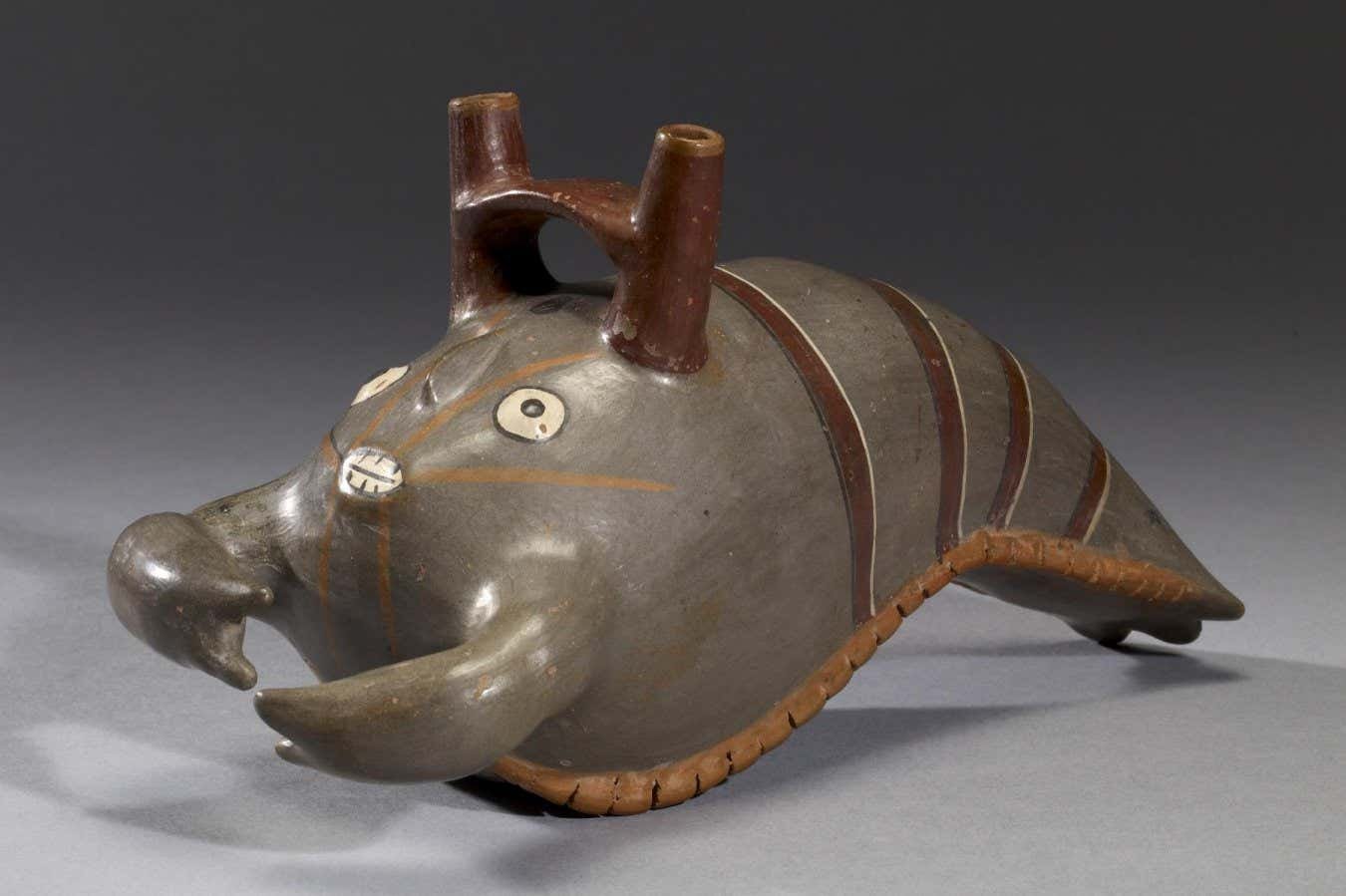For weeks after October 7, street artist Julia Shtengelov couldn’t bring herself to paint.
Finally, she went to Park Hamesila in Tel Aviv and painted her signature black-and-white girl holding a sign that read “Bring the kids home.”
“I felt relief,” Shtengelov said, recalling that day.
Tel Aviv’s street art scene has flourished in the Florentin neighborhood alongside the city’s burgeoning alternative culture. Artists like Shtengelov have played a significant role in shaping the neighborhood’s visual landscape, with her distinctive works adding to the rich tapestry of political messages, social commentary, and artistic expression that defines Florentin today.
Shtengelov, who paints under the name “Imaginary Duck,” never intended to become an artist. She was born in Russia to a Jewish mother and a Russian-Ukrainian father, both of whom she describes as “heroic.” Her family moved her and her sister to Israel in 1989 when Shtengelov was 13 years old.
Shortly after the move, her mother died of cancer and, just a few years later, her father died in a fire at their home. Firefighters said he likely fell asleep while smoking. At the age of 18, Shtengelov and her older sister were alone in the world.
“I saw very bad times,” she said. “I’m a survivor.”
In 2008, she hit an emotional low and needed an escape, something with excitement but at a low cost – graffiti.
“It was just to get out of my boredom and to get more adventure and adrenaline,” Shtengelov said.
She started with plaster molds of ducks, hence the name Imaginary Duck. First, she would make the mold, paint them, and then glue them onto random buildings. Her ducks are in Israel, Budapest, Ukraine, Italy, Czech Republic, Egypt, Germany, and Poland.
Today, she no longer uses plaster and focuses on spray paint. Her work typically depicts a black-and-white girl whom she simply refers to as “my character,” with different creatures such as a red fox, a blue fish, and, of course, ducks.
She has timed herself, and it takes her 20-40 minutes to paint the girl, and just three and a half minutes to paint the fox. The novice graffiti artist received messages from people who resonated with her art. Olim, new immigrants to Israel, sometimes told her that her character made them feel less alone.
“I started to receive messages that some people see their nieces, sisters, and themselves in my work,” Shtengelov said. “It’s a miracle to me.”
She wagers that the reason the girl resonates with people is because she fits into the “little unsmiling girl” archetype: Coraline, Lydia Deetz, Wednesday Addams, etc. Shtengelov joked that the real reason her character doesn’t smile is because she’s Russian.
“We have a saying in Russian, ‘Laughing without cause is a sign of stupidity,’” Shtengelov said with a smile.
After October 7, her character’s expressions became sadder and angrier.
WAR IMPACT
Hamas’s massacre devastated Shtengelov. Recalling the day, she pauses, shakes her head, and wipes away tears.
“I have nothing to compare it to,” she said, searching for a metaphor. “A bomb to the face? A punch to your belly? But no, I can’t find a comparison.”
On the morning of October 7, she woke up in Tel Aviv at her boyfriend’s place to the sound of sirens. Instead of going to the building’s shelter, she stayed in bed counting the “booms” she heard outside, likely the sound of the Iron Dome intercepting missiles.
“When I counted to 10, I was sure something impossible happened,” Shtengelov said.
She went online and sat in disbelief and horror, watching the news come in.
“They’re burning alive, they’re being hunted, they’re being raped, name it… for hours and hours and hours,” she said through tears. “After the news came the worst part, the pictures.”
Shtengelov told The Jerusalem Post this was the second time she recounted the day, and that she still hasn’t fully processed it.
Street art is a side gig for Shtengelov, who went to the Technological College of Beer-Sheva and now works full time in tech at the telecommunications company AT&T. Computer science is another huge passion of hers. But despite her love for IT, she couldn’t bring herself to work after October 7, feeling overpowered by the weight of it all.
Unable to work, she was also unable to paint. But she reminded herself why she got into art. Here she was again, feeling deeply low.
“I forced myself at first,” she said.
She painted multiple girls with the “Bring Them Home” sign and finally intended to paint something different, her character with a fish. But when she stepped away from the painting again, she painted the girl with the sign.
In addition to her Bring Them Home paintings, she also painted a few girls with the “Together We Will Win” slogan. On the issue of a hostage deal and ceasefire, Shtengelov feels she is unqualified to make judgments.
“I’m not a politician, and I’m not the one who is fighting,” Shtengelov said. “I don’t know enough. I never intended to do something political, but in Israel it is very difficult to avoid this because it’s a part of your life.”
In one instance, she painted a girl holding a sign that read “FREE PINK,” referencing Inbar Haiman, the Haifa visual arts student and street artist who went by the name “Pink.” Haiman was kidnapped from the Nova festival and later killed in captivity.
“It was another crush when we found out,” Shtengelov said about Haiman’s murder.
Shtengelov felt a deep need to contribute after October 7. In addition to her street art, she sold canvases of her work and donated the money to support soldiers. She herself has a son in the army.
“He’s the first miracle I never planned,” Shtengelov said with a smile.
UNREGULATED MEDIUM
Shtengelov’s post-October 7 work has been positively received. Only once was one of her girls painted over. After she finishes a painting, she feels like it is not hers anymore and that she has given it away. She enjoys that the art is temporary.
In the unregulated world of street art, anything can happen. Artists can get caught by the police and fined, which Shtengelov says is a rite of passage. Art can be altered or painted over by another artist, which is common.
“If you’re scared of the police or you complain about your work being covered, get a canvas and stay home,” Shtengelov said.
Recently, multiple paintings by Shtengelov have been tampered with and defaced. On or next to multiple of her girls, someone has been writing phrases like “raped by Arabs,” “killed by Arabs,” and “burned by Arabs.” This mysterious vandal has been using her work to make commentary that Shtengelov doesn’t align with.
“In general, I don’t like when people add messages to my works,” she said. “It changes the meaning, and some can think that these messages are mine and it may damage my reputation.”
However, she is aware of the volatility that comes with having public – and illegal – art. She doesn’t plan to fight back against this provocateur, citing the Streisand effect, where the more you try to hide something, the more it is seen.
At one point, Shtengelov attempted to leave her tech career and only do art but found it lacking, saying she needs both to feel satisfied. Going forward, she plans to write a graphic novel on her character, where she will finally give her girl a name.
As she continues to paint across the walls of Tel Aviv, her work serves as a silent reminder of resilience in the face of unimaginable loss. Despite the sorrow and anger that have marked her recent creations, Shtengelov remains committed to her art as a form of expression and connection.
Before she went back to painting the streets after October 7, she painted her character on a canvas holding a sword and a shield with the Star of David on it. A girl from America reached out to Shtengelov to ask if she could get the image tattooed. Shtengelov happily gave her blessing, and then later painted the image near Rothschild Street.
“I feel like my life means something,” she said, reflecting on messages people have sent her about her work. “I don’t feel like an artist; it was a huge, huge, huge surprise.”





